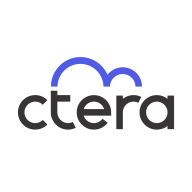

CTERA Enterprise File Services Platform and AWS Snowball compete in data management and transfer solutions. AWS Snowball generally holds an advantage due to its robust features.
Features: CTERA includes secure, edge-to-cloud data services, global file system capabilities, and a hybrid solution supporting on-premises and cloud environments. AWS Snowball enables high-speed data transfer with integrated computing power, offering end-to-end encryption, tamper-evident features, and identity access management.
Room for Improvement: CTERA could enhance data movement procedures and user interface simplicity. Additionally, streamlining the integration process and introducing more advanced analytics tools would be helpful. AWS Snowball may improve by enhancing its customer service personalization, optimizing its device deployment practices, and offering more transparent pricing models.
Ease of Deployment and Customer Service: CTERA is known for its seamless cloud deployment and strong customer support. AWS Snowball offers straightforward appliance-based deployment, but support can sometimes lack personalization compared to CTERA.
Pricing and ROI: CTERA offers a cost-effective setup with an emphasis on long-term savings, providing better ROI for cloud-centric businesses. AWS Snowball's pricing reflects its high-performance capabilities, offering excellent value in high-volume data migration scenarios.


Snowball is a petabyte-scale data transport solution that uses devices designed to be secure to transfer large amounts of data into and out of the AWS Cloud. Using Snowball addresses common challenges with large-scale data transfers including high network costs, long transfer times, and security concerns. Customers today use Snowball to migrate analytics data, genomics data, video libraries, image repositories, backups, and to archive part of data center shutdowns, tape replacement or application migration projects. Transferring data with Snowball is simple, fast, more secure, and can be as little as one-fifth the cost of transferring data via high-speed Internet.
The CTERA Enterprise File Services Platform provides a cloud-native global file system over public and private object storage, revolutionizing the world of hybrid cloud data solutions. Enhanced by a rich data services ecosystem, CTERA enables enterprises to gain full control of their data for optimal edge performance, data insight, and governance. The platform focuses on security, providing features like data encryption, access controls, and ransomware protection. Centralized management tools enable efficient data control and monitoring. The platform is being used to replace legacy NAS and file servers, especially at remote locations, and simplify backup and disaster recovery of file data while providing the flexibility of multi-cloud deployments with infinite scalability. CTERA is at the core of hybrid cloud transformations of some of the world’s largest banks, healthcare organizations, global media groups, and government agencies, in deployments that scale to tens of petabytes.
We monitor all Cloud Migration reviews to prevent fraudulent reviews and keep review quality high. We do not post reviews by company employees or direct competitors. We validate each review for authenticity via cross-reference with LinkedIn, and personal follow-up with the reviewer when necessary.